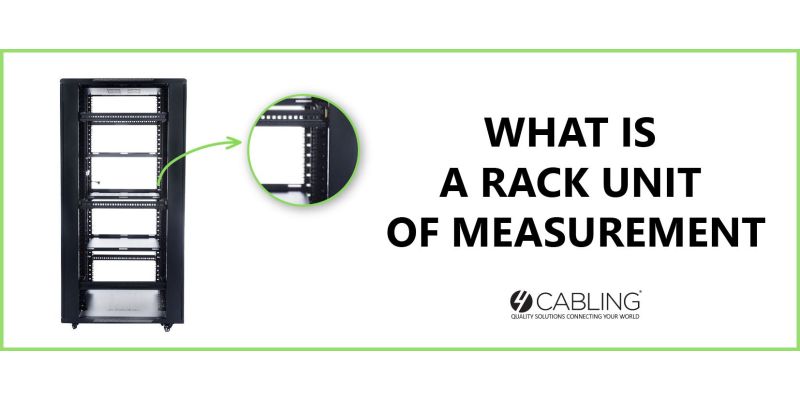Understanding Rack Units: A Guide to Server Rack Sizes
Whether you're involved in the configuration of a state-of-the-art data centre or the meticulous setup of a server room, having a deep understanding of rack units (U) is crucial. Rack units play a pivotal role in determining the vertical space IT equipment occupies, ensuring optimal organisation and efficiency.
Defining Rack Units
At its core, a rack unit is a standardized measurement, denoted as 'U' or sometimes ‘RU’. It precisely quantifies the vertical space that IT equipment occupies within data centres or server rooms. To break it down further, a single rack unit (1RU) is equivalent to 44.45 millimetres or 1.75 inches in height.
The adoption of such a standardized measurement system in the IT realm ensures that devices - be it servers, switches, or other network apparatus - are manufactured to align with these specific rack dimensions.
Historical Context of Rack Units
The concept of "rack units" isn't a modern novelty. It traces its origins to the initiatives of the Electronic Industries Association (EIA). The EIA saw the burgeoning IT industry's need for uniformity in measurement. Standardizing rack unit dimensions removed the complexities and inconsistencies for IT professionals. This uniformity meant that IT equipment could be more easily interchangeable, eliminating the constraints of proprietary standards. Since 1992, the EIA-310-D iteration has been the go-to benchmark, ensuring continuity in rack unit measurements.
Significance of Rack Units in IT
Consistent standards offer distinct advantages:
Compatibility & Expandability: A standardized rack unit ensures that diverse equipment pieces integrate seamlessly into the same rack. This is vital when augmenting infrastructure or replacing antiquated or worn-out equipment.
Efficient Space Management: For server rooms where space is at a premium, rack units are invaluable. They enable equipment to be arranged systematically, making the most out of every available inch.
Economic Benefits: With standard rack units, the dependency on custom solutions diminishes. This means fewer resources spent on bespoke racks, leading to notable cost efficiencies.
Rack Units: Best Practices
When you're looking to harness the full potential of rack units, consider these key strategies:
Anticipate Expansion: While planning your IT layout, always keep an eye on future growth. Reserving some rack units now can save considerable reconfiguration efforts later as your enterprise grows.
Prioritise Cable Management: Effective cable management isn't merely aesthetic; it's functional. It ensures consistent airflow, reducing overheating risks and curbing potential equipment damage. Utilise cable organisers and designated pathways to maintain order.
Incorporate Blank Panels: Fill gaps in your rack with blank panels. These enhance airflow and mitigate temperature spikes, reducing the likelihood of equipment malfunction.
Implement Detailed Labelling: Each piece of equipment should be meticulously labelled, streamlining both troubleshooting and maintenance. If an issue arises, pinpointing and resolving it becomes considerably quicker.
Avoid Excess Weight: Overburdening racks is a recipe for structural issues and inefficient cooling. Distribute equipment evenly across racks to ensure equilibrium.
In summary, rack units are more than just a unit of measurement; they're the foundation of an efficient, reliable IT setup. Whether your goal is to maximise your current IT infrastructure, streamline compatibility, or realise cost savings, understanding and implementing rack units is essential. For any in-depth queries, do not hesitate to reach out to our team at 4Cabling. Our experts stand ready to guide you to the optimal solutions for your server rack management needs.







